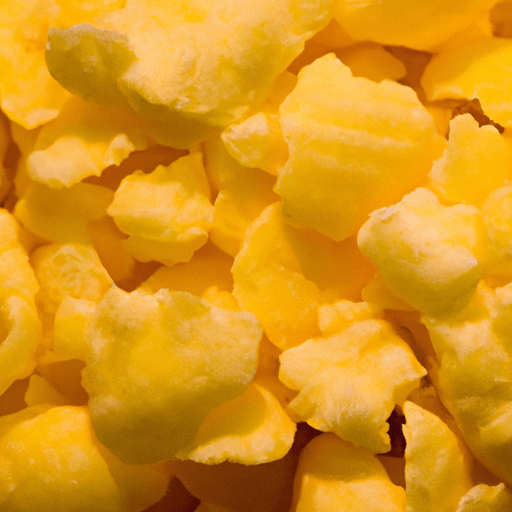Exploring the Irresistible World of Butterscotch Chips
If you have a sweet tooth and enjoy decadent treats, then butterscotch chips are a must-have ingredient in your kitchen. These small morsels of creamy, buttery goodness add a delightful flavor to a wide range of recipes. Let’s dive into the tantalizing world of butterscotch chips – their taste, versatility in cooking, nutritional value, and intriguing history.
Taste: A Symphony of Sweet and Buttery Delight
Butterscotch chips are known for their rich, sweet, and buttery flavor that instantly transports you to a world of indulgence. These luscious morsels are made by blending brown sugar, butter, and vanilla, creating a distinctively smooth and creamy taste. The combination of sweet caramel notes and the unmistakable warmth of butter makes them utterly irresistible.
Versatility in Cooking: Endless Opportunities
The versatility of butterscotch chips knows no bounds. These delicious morsels can be incorporated into various sweet treats, creating a burst of flavor in every bite. Here are a few popular uses of butterscotch chips in cooking:
1. Baking Delights
Butterscotch chips are a baker’s dream come true. From cookies, muffins, and cakes to brownies, scones, and pies, these golden nuggets can elevate any baked good to new heights of flavor. They melt beautifully, adding gooey pockets of sweetness that pleasantly surprise your taste buds.
2. Decadent Desserts
Create show-stopping desserts by sprinkling a handful of butterscotch chips on top of ice cream sundaes, parfaits, or caramel bars. The butterscotch chips add a delightful crunch, intensifying the overall dessert experience.
3. Trail Mix Magic
Looking to enhance your homemade trail mix? Add a generous scattering of butterscotch chips alongside other goodies like nuts, dried fruits, and chocolate. The combination of flavors and textures will make it hard to resist nibbling on this delicious snack throughout the day.
4. Tantalizing Toppings
Drizzle melted butterscotch chips over pancakes, waffles, or French toast for a delectable breakfast or brunch treat. The warm, velvety sauce adds a heavenly touch that’ll have you reaching for seconds.
Nutritional Value: A Treat Best Enjoyed in Moderation
While butterscotch chips are undeniably delicious, it’s worth noting their nutritional value. They are primarily made of sugar, butter, and artificial flavorings, so they should be enjoyed in moderation. Here’s a brief breakdown of their nutritional composition:
- Calories: Approximately 80 calories per tablespoon
- Fat: Around 5 grams per tablespoon, mostly saturated fat
- Sugar: Roughly 7 grams per tablespoon
- Protein: Minimal, with less than 1 gram per tablespoon
An Intriguing History: A Scottish Origin Story
The origins of butterscotch can be traced back to Scotland, a place synonymous with culinary delights. In the early 19th century, confectioners in Scotland discovered the art of creating creamy, buttery candies by carefully heating sugar and butter together. The name “butterscotch” is said to have originated from “scotch” meaning “to cut” and “butter,” referring to the cutting process involved in crafting these delectable treats.
Over time, the beloved butterscotch flavor was transformed into small chips to offer greater convenience in the kitchen. Ever since, these chips have become a staple for baking enthusiasts and culinary creators around the world.
Indulge in Butterscotch Bliss
In conclusion, butterscotch chips are a delightful addition to any kitchen pantry, bringing a burst of sweet and buttery goodness to a variety of recipes. Whether you’re a passionate baker or simply enjoy crafting delicious desserts, these golden morsels are sure to enhance your culinary creations. Remember to enjoy them in moderation and savor the taste of each decadent bite. Let your imagination run wild and discover the many ways you can incorporate butterscotch chips into your next kitchen adventure!
Butterscotch Chips
Origin: Butterscotch chips are a type of confectionery made from ingredients like brown sugar, butter, and flavorings. The exact origin of butterscotch flavor is unclear, but it is believed to have originated in Scotland in the early 19th century. The name “butterscotch” is said to have been derived from the process of “scotching,” which involves cutting or scoring a substance.
Common Uses: Butterscotch chips are primarily used as a baking ingredient. They are commonly added to desserts such as cookies, brownies, cakes, and muffins to provide a sweet, rich butterscotch flavor. They can also be used as a topping or filling in various sweet treats, including ice cream, pancakes, and fudge.
Nutritional Benefits: Butterscotch chips are a high-calorie ingredient. A 1/4 cup (39g) serving of butterscotch chips contains approximately 210 calories, 7g of fat (4.5g saturated fat), 34g of carbohydrates, and 0g of protein. They are also a source of small amounts of calcium and iron.
Unique Properties: Butterscotch chips have a distinctive, sweet, and buttery flavor. They are solid at room temperature but melt easily when exposed to heat, making them ideal for baking. These chips retain their shape while baking, resulting in pockets of butterscotch flavor throughout the baked goods. They can be used as a substitute for chocolate or other flavored chips in recipes to add a different taste profile.
Historical Significance: Butterscotch as a flavor has a long history and was traditionally made with ingredients like sugar, butter, and boiling water. However, the invention of butterscotch chips is more recent. The exact origin and inventor of butterscotch chips are unknown. Butterscotch chips gained popularity in the mid-20th century and have remained a popular ingredient in baking ever since.




Use the share button below if you liked it.
It makes me smile, when I see it.